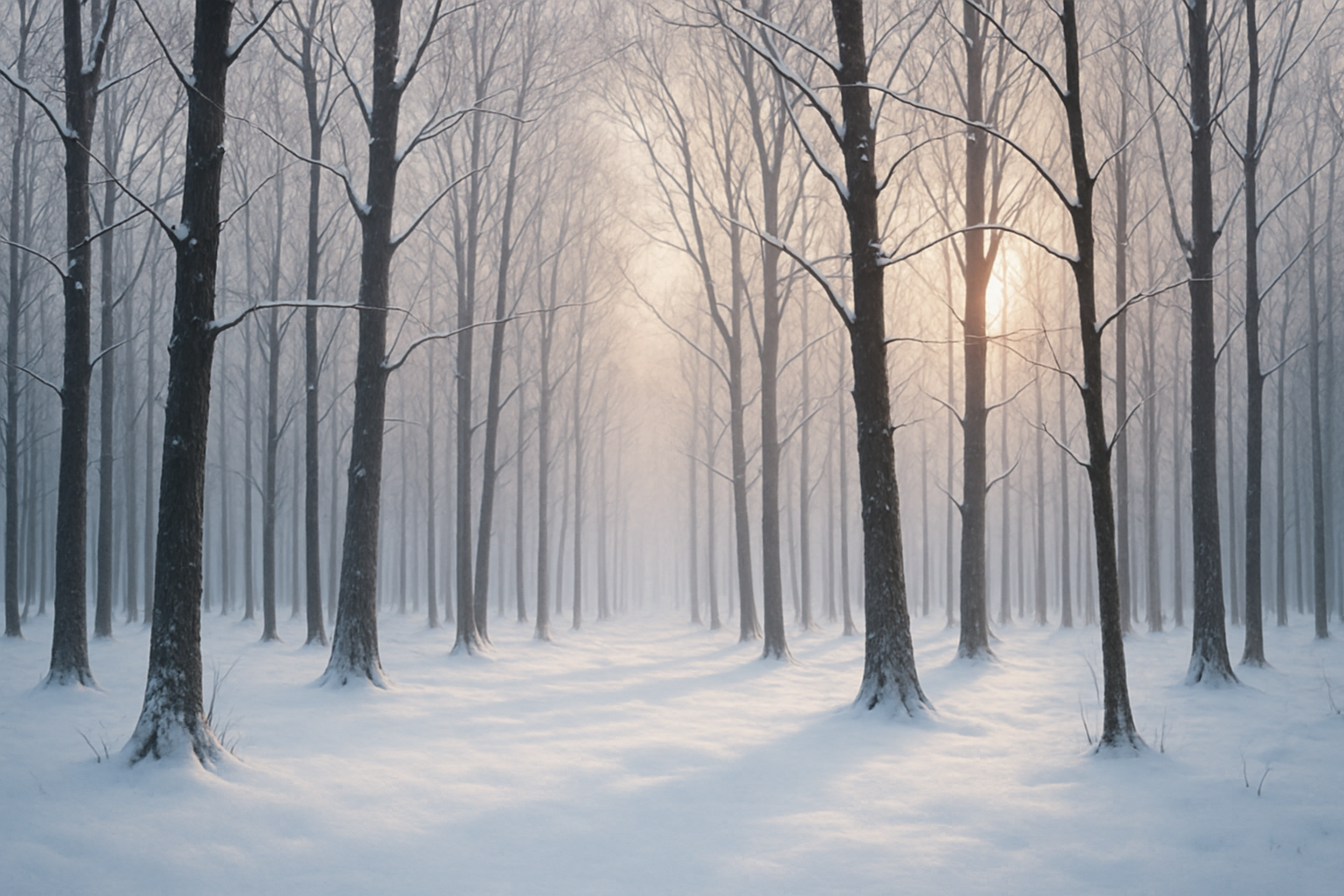
Sleeping giants — bare trees standing in silence, conserving life beneath the surface
Sleeping Giants: The Long Winters of Deciduous Trees
When the air turns sharp and the days grow short, something ancient stirs in the trees. It doesn’t shout. It doesn’t flash. It simply slows.
Leaves fall, one by one, like the ticking of a natural clock winding down. Branches bare themselves to the cold. The forest goes quiet. Not empty, just… resting. The sleeping giants are settling in.
Deciduous trees have been doing this for longer than we’ve had calendars to name the seasons. They don’t hibernate like animals or migrate like birds. Their winter survival strategy is more subtle. A retreat inward. A long pause. A kind of botanical meditation.
It starts in autumn, when the tree begins pulling in its resources. Nutrients are reabsorbed from the leaves, stored deep in the roots and trunk. The green chlorophyll fades, revealing a burst of fall color before the final curtain drop. Once the leaves fall, the tree is bare. Not lifeless, just preparing.
Winter is a risk in the tree world. Water can freeze inside delicate cells, light is scarce, and the weight of snow can crack limbs like dry twigs. But instead of fighting the cold, deciduous trees surrender to it. They empty themselves of excess, slow their metabolism, and enter a state called dormancy.
It’s not quite sleep as we know it, but it’s close. The tree’s internal machinery powers down. Growth halts. Energy use drops. Sap thickens, moving sluggishly or not at all. Above ground, it may look like nothing is happening. But below the bark, life hums on—slowly, quietly, patiently.
Even their buds, tightly sealed and waiting, are a kind of promise: “We’ll be back.”
Deciduous trees are master planners. Long before winter arrives, they’ve already packed their bags. Their buds were formed back in summer, tucked into tiny cases to weather the cold. When spring’s warmth finally returns, those buds don’t need to build from scratch. They simply unfurl what was always waiting.
That’s the secret of dormancy. It’s not a shutdown. It’s a strategy.
In some years, winter is harsh. Storms tear through. Ice clings to every surface. Yet come April, those same trees burst into bloom like nothing happened. Their resilience isn’t about brute strength. It’s about knowing when to rest. Knowing that growth is not always loud or fast.
You can walk past a sleeping maple and not see anything new for months. But inside its core, cells are preserving, protecting, preparing. The roots below are still alive, soaking up what they can. The tree is holding space for the future.
It’s easy to forget that dormancy is a kind of work. Just not the kind we usually admire. There’s no flash, no obvious progress. But without it, there would be no spring.
Deciduous trees remind us that rest is not laziness. It’s not absence. It’s a season with its own wisdom. A time to slow down, gather strength, and wait.
They also remind us how to endure. To stand tall even when stripped of everything external. To survive with what lies within.
Not every tree in the forest does this. Evergreens keep their needles, bracing through winter with a different tactic. But deciduous trees lean fully into the cycle. They give up what they can’t carry, trusting that the return will come.
And it does. Every year.
There’s something comforting about that rhythm. Something hopeful. The idea that even in the starkest part of the year, life is just beneath the surface, biding its time.
When snow dusts a grove of bare trees, the effect can be haunting. A forest of skeletons, silent and still. But these aren’t ghosts. They’re sleepers. Dreaming of warmer days.
If you step into the woods on a winter morning, you’ll feel it. That breath-held hush. The strength in the stillness. The quiet determination that says, “I’ve done this before. I’ll do it again.”
So the next time you see a bare tree in the dead of winter, don’t mistake it for lifeless. It’s a giant at rest. A being in waiting. A living lesson in patience.
Because sometimes the most powerful thing a tree can do… is nothing at all.
Did You Know?
![]()
- Dormancy protects trees from freezing damage by slowing cellular activity and reducing water content in limbs and leaves.
![]()
- Some tree species use sugars and antifreeze proteins in their sap to help prevent ice crystals from forming inside their cells.
![]()
- Tree buds are pre-formed in late summer and remain dormant until spring triggers their opening.
.
FAQs About Talking Trees
What does it mean when a tree goes dormant?
Dormancy is a period when a tree slows down its metabolic activity to survive harsh conditions, particularly cold weather. Growth stops, but the tree is still alive.
Do all trees go dormant in winter?
No. Most deciduous trees enter dormancy, but many evergreens remain active, though at a slower pace. Dormancy is especially common in trees in temperate climates with cold winters.
Is my tree dead or dormant?
It can be hard to tell, but dormant trees still have flexible twigs, visible buds, and moist tissue under the bark. A snap test or scratch test can help reveal if it’s still alive.
Why is dormancy important for trees?
It helps trees conserve energy and protect themselves from winter damage. Without dormancy, freezing temperatures could harm the tree’s vital structures.
Have questions about the trees in your own yard?
Tip Top Arborists is here to help you care for your living legends. Let our certified arborists provide expert guidance for a lifetime of healthy trees.
